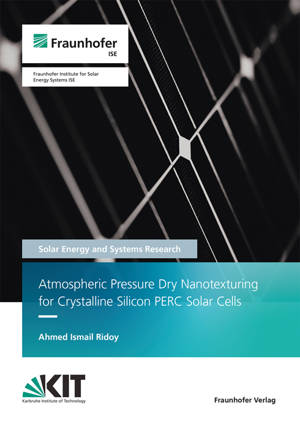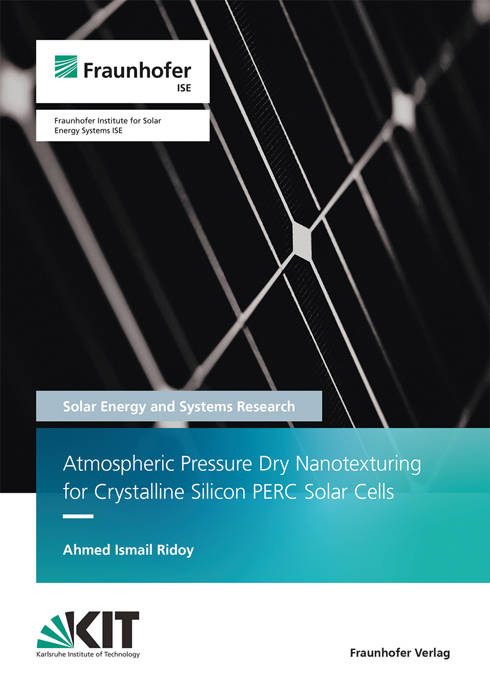
- Afhalen na 1 uur in een winkel met voorraad
- Gratis thuislevering in België vanaf € 30
- Ruim aanbod met 7 miljoen producten
- Afhalen na 1 uur in een winkel met voorraad
- Gratis thuislevering in België vanaf € 30
- Ruim aanbod met 7 miljoen producten
Atmospheric Pressure Dry Nanotexturing for Crystalline Silicon PERC Solar Cells.
Ahmed Ismail Ridoy
€ 79,95
+ 159 punten
Omschrijving
The state-of-the-art industrial fabrication of silicon solar cells requires significant handling of wet processes and large amounts of wet chemicals. On the other hand, dry etching processes mostly require plasma and vacuum sources as well as use of process gases with high global warming potentials (GWP). In this work, an alternative plasma-free and mask-less dry etching technique of single-sided in nature is investigated. This novel dry etch process uses fluorine (F2), a low to zero GWP gas as etchant, diluted at atmospheric pressure condition to facilitate nanoscale texture of monocrystalline silicon (mono-Si). The etched surface morphology is optimized in terms of surface roughness or enlargement and surface reflection followed by the optimization of phosphorus oxychloride (POCl3) based n-type emitter diffusion and front surface passivation. Such optimization enables improved emitter homogeneity with minimum standard deviation of 3% and front passivation with just silicon nitride (SiNx) by plasma-enhanced chemical vapor deposition. Altogether this optimized nanotexture-emitter combination is integrated into the inline fabrication of the passivated emitter and rear solar cell or PERC-architecture allowing improved energy conversion and increased cell efficiency up to an absolute 0.6%.
Specificaties
Betrokkenen
- Auteur(s):
- Uitgeverij:
Inhoud
- Aantal bladzijden:
- 187
- Taal:
- Engels
- Reeks:
Eigenschappen
- Productcode (EAN):
- 9783839618790
- Uitvoering:
- Paperback
- Afmetingen:
- 161 mm x 10 mm
- Gewicht:
- 280 g

Alleen bij Standaard Boekhandel
+ 159 punten op je klantenkaart van Standaard Boekhandel
Beoordelingen
We publiceren alleen reviews die voldoen aan de voorwaarden voor reviews. Bekijk onze voorwaarden voor reviews.









